How My Bipolar Diagnosis Changed My Life—And Made Me a Better Artist
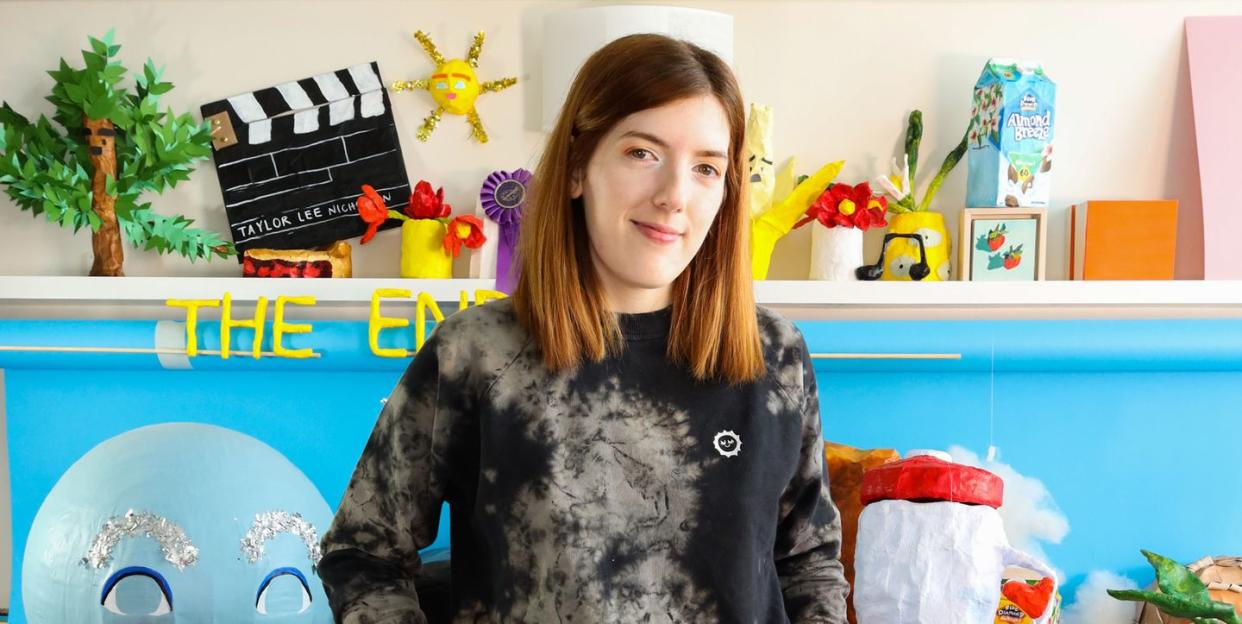
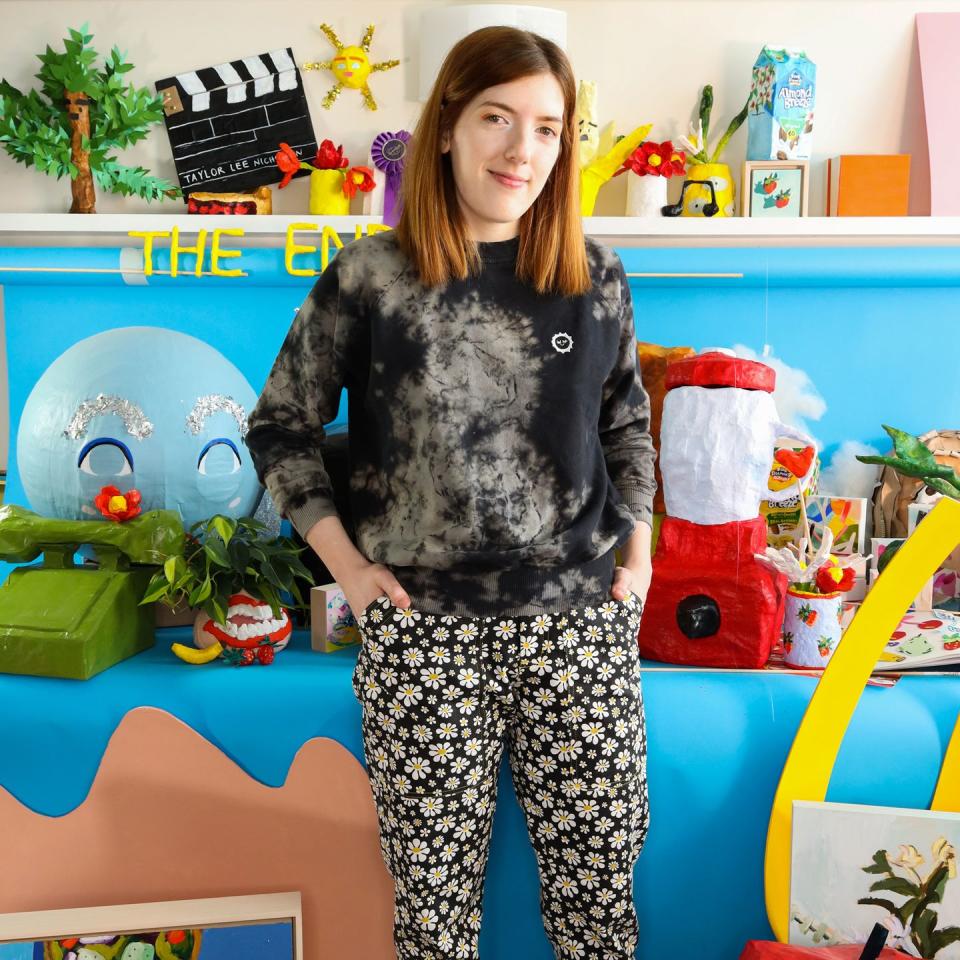
My name is Taylor Lee Nicholson. I'm a 30-year-old artist living in Charlotte, N.C.
I started feeling depressed as early as middle school. I tried talking to my mom about it, even printing out the results of an online quiz I’d done called the Beck Depression Inventory, which indicated I may have major depressive disorder. When I showed my results to my mom, she looked at my printout, didn’t say anything, and left the room. This was heartbreaking for me, but it wasn’t a surprise. We were a family that didn’t talk about our feelings...or anything difficult, really.
Throughout middle and high school, I kept my feelings to myself and tried to suppress them. I also made a lot of art, even winning a few art contests from an early age. My highs and lows made me feel really out of control, though, and not eating and over-exercising were ways I could feel like I had some control over myself and my mood. I developed anorexia that got so bad that by the time I was in college, I would faint at work from not having enough calories. I was obsessively counting how many almonds I was eating, while I forced myself to run four miles a day—even on a twisted ankle.
Now, I know the root of my issue wasn’t truly about food or body image, it was about trying to control how out-of-control I felt because of my undiagnosed bipolar disorder. But at the time, it was easy for me and everyone around me to focus on the eating disorder as the heart of the problem.
Then came a major behavior change—but the root remained.
Finally, by 2012, I was fainting so often and feeling so sick that on a summer break from my sophomore year of college, I checked into a three-month, inpatient eating disorder program. There, I was officially diagnosed with anorexia and depression. The treatment was really helpful in that I learned how to reduce those harmful behaviors; the art therapy program inspired me to get back into art and start using it as an outlet for my feelings. But it wasn’t enough to counteract the loss of my main coping mechanism: starving myself and over-exercising.
My bipolar was still undiagnosed, and I was struggling. I started self-medicating with recreational drugs and partying; anything to numb myself. Just like with my anorexia, I was still trying to avoid feeling the things I needed to feel. I’d replaced my old harmful behaviors with new ones because I still hadn’t dealt with the root of the issue. When I was anorexic, I had been on the Dean’s list, but after my eating disorder treatment, I came back to school and drove my GPA into the ground. I was always partying or hungover and skipping class. Eventually, I flunked out.
I got a job working at a bean-to-bar chocolate factory and retail store. I was grinding cocoa beans as a chocolate maker, and I loved it. Quickly I became a superstar employee and got promoted to running an entire department of chocolate makers. But soon enough, my bipolar symptoms got in the way. I had intense bouts of rage. If my boss criticized me, I became so emotional I couldn’t pull it together and would need to go home. I started skipping full weeks of work because I was depressed. But I didn’t want to admit that to my boss or coworkers, so I would lie and say I was sick or my mom was having an emergency. I’d basically use any excuse to avoid telling anyone what I was going through, why I couldn’t get out of bed.
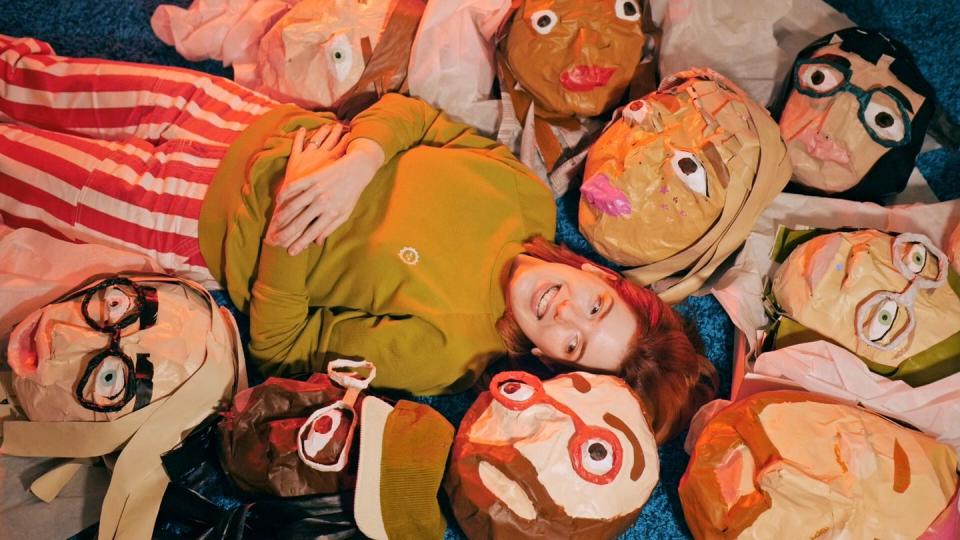
What bipolar really feels like...
For more than two decades, I didn’t have a diagnosis, and I didn’t know what was wrong with me. I was passionate about that chocolate maker job, but I couldn’t stay consistent. That was a familiar feeling I’ve had throughout my life: I’m doing great, I’m a star, then suddenly I stop showing up and can’t be relied on. It’s very intense, like flipping a switch. It sucks. When I’m up and doing well, I feel like I have a fire inside of me—I feel invincible, proud, witty, quick, and effervescent like everything’s coming up daisies and going my way. Then when I’m down, I go to this nihilistic place where everything is hopeless and nothing will ever be enough. I get stuck there and feel unmotivated, heavy, and sapped of energy like the fire just goes out. I can’t bring myself to talk to anybody or do anything, even take a shower.
I wouldn’t open up to anyone about it, because it felt like when I tried to share the loop I felt stuck in, most people would want to “fix” it by telling me what I should do, or saying something like “It can’t be that bad. Try to look on the bright side!” So I didn’t really let other people in when I was struggling.
I met John, my now-husband through friends-of-friends. We had a friendship for several years before we started dating. He’s one of the very few people I felt I could always be pretty honest with. He’s not a warm and fuzzy person who will cradle you and say everything’s going to be OK, and he never tried to swoop in and “fix” me. He has always accepted me wherever I am in a given moment and been willing to sit beside me and wait it out until my low feelings pass.
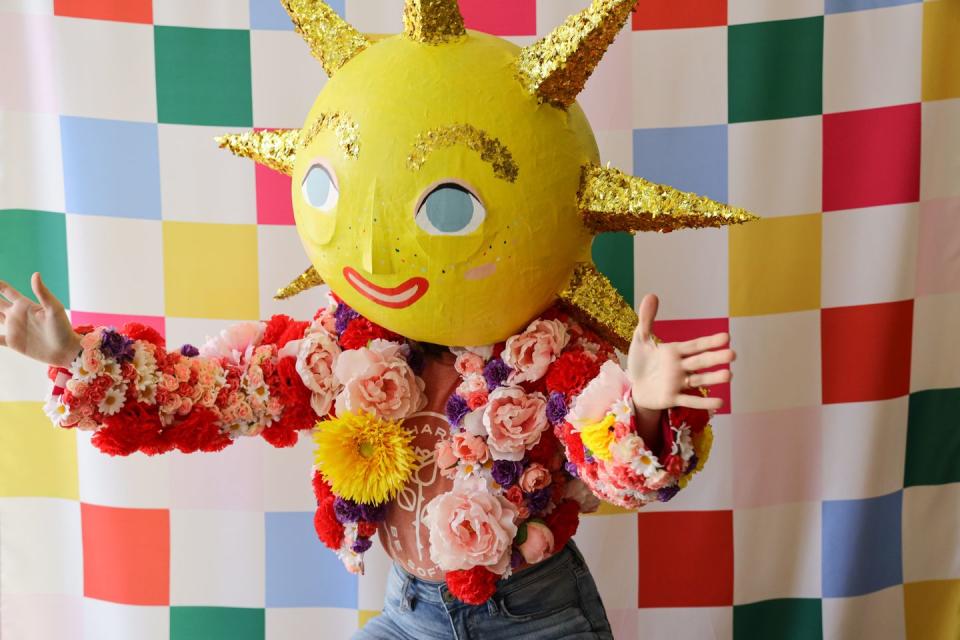
Finally: A revelatory diagnosis.
In 2016, I started spending more time making art, especially abstract paintings because I loved putting on an album and flinging paint. By early 2017, I had gone back and finished college and was working as an independent artist—I’m a jack of all trades and work with paint, paper mache, video, performance art, sculpting, even balloons. But I started having debilitating panic attacks, four to seven a week. It was miserable. When you don’t know what a panic attack is and you have one, it makes you feel like you’re legitimately going crazy, you’re so out of control. I started seeing a therapist just to try to manage the panic attacks enough to survive my day-to-day. He encouraged me to figure out what my body was responding to and helped me open up about my history of trauma and my ups and downs.
He connected me with a psychiatrist, who diagnosed me with bipolar and said that’s most likely what I’ve been struggling with since middle school. I started the long process of trying a bunch of different meds to see what worked, and finally found a mood stabilizer that helps me. It basically cuts off the tops of the high peaks and the bottoms of the low valleys to keep me feeling more moderate. I also have as-needed anxiety meds to take during panic attacks, but I don’t really have those anymore.
Talk therapy has also been huge for me–I went twice a week for years, and now I go once a week. Having a safe space to be honest about how I’m feeling and to have it be accepted helps me feel less like the world is out to get me. It helped me see there are more people who it would be safe to be vulnerable with if I wanted to. It’s helped my relationship with my husband, my mother, and so many other people in my life.
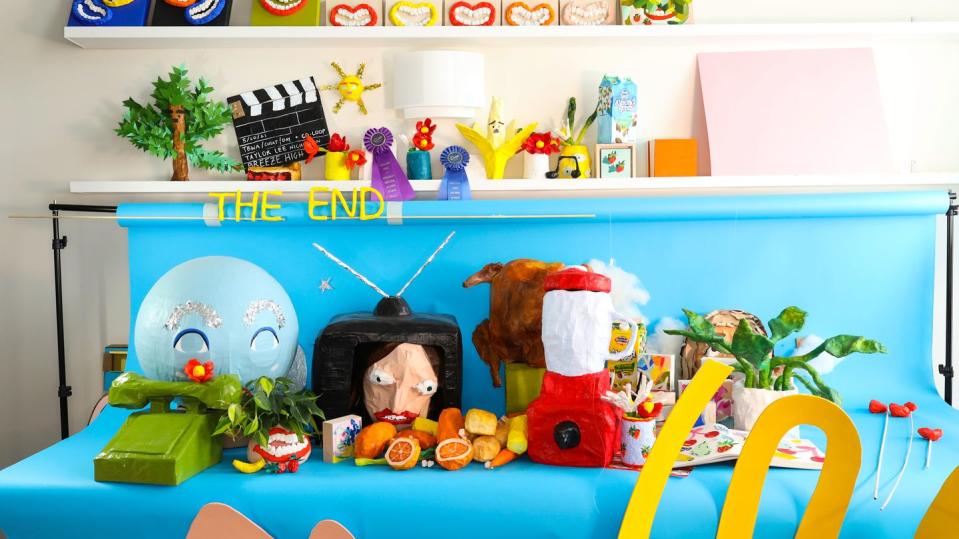
Eventually, I expressed and healed through art.
My art is a huge piece of the puzzle in managing my bipolar. It’s a great coping mechanism. Making things out of paper mache keeps both my mind and my hands busy. It’s easier to put what I’m thinking or feeling into artwork and to use that as a way to express things that are otherwise difficult for me to communicate. For example, every Christmas, I always struggle with horrible loneliness. During this time of year, commercials, movies, and music are all about being with an extended family you love who loves you back. I feel like I don’t really have this. While I can usually ignore it throughout most of the year, holiday marketing puts it in your face. And this past Christmas was extra hard for me because of quarantine. So I made paper mache heads of my friends, got them to each sing “Silent Night” as a voice memo, compiled it so it sounded like we were singing together, and then made a creepy, weird, funny video of our characters all caroling together. Making art like that helps me be honest about difficult feelings like isolation and loneliness and to find my sense of humor in it.
Art also helps me like myself more. Going through my struggles, it’s been easy to hate myself in my low periods. But my art helps me get in touch with my sense of humor, my wit, the weird things I like, and helps me embrace all parts of myself. My art is colorful and silly, because that’s a part of me, too. Even the word “bipolar” brings to mind two extreme poles: a high or a low, an up or a down. But the hugest revelation is accepting myself wholly—it’s not or but and. My bipolar means I’m both high and low. That’s what I’m trying to express in my art: joy and despair both exist within me, and they’re what makes me whole. I want my art to show the joy of having both sides–my art wouldn’t be as cool if it didn’t have those “negative” parts to it. Instead, it shows the wholeness of being a person with bipolar, and I’m proud of that.
You Might Also Like

